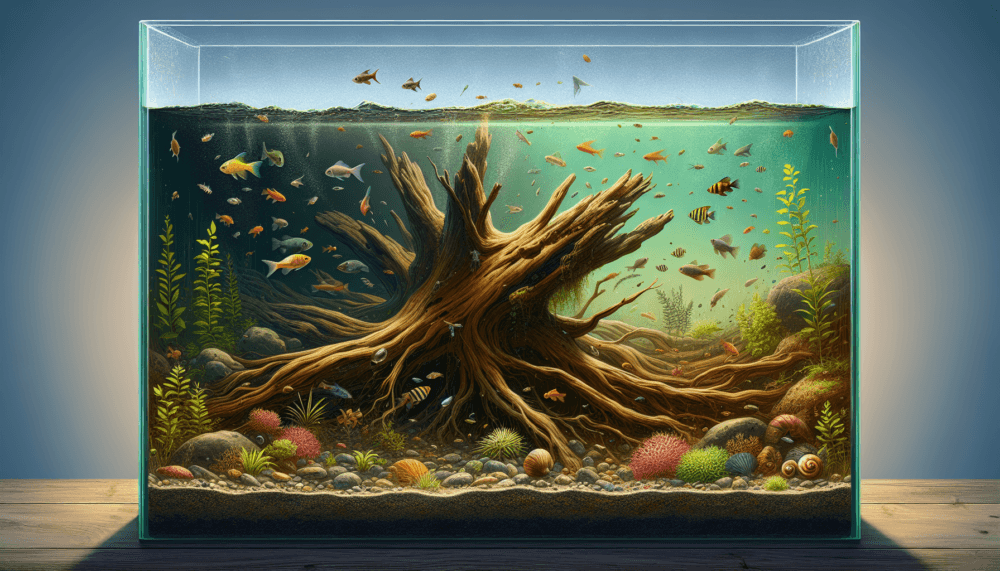Imagine you’ve just bought a stunning piece of driftwood to adorn your fish tank or garden, but there’s one small concern on your mind: how long will this driftwood leach tannins? If you’re curious about the duration for which tannins will affect the water, rest assured, this article will provide you with all the information you need. Let’s dive in and explore the fascinating world of tannins in driftwood!
Factors Affecting Tannin Release from Driftwood
Driftwood is a popular addition to aquariums and terrariums, not only for its aesthetic appeal but also for the benefits it provides to aquatic environments. However, one common concern that arises when using driftwood is the release of tannins into the water. Tannins are organic compounds found predominantly in plants, and their release can have various effects on the water chemistry and inhabitants of the tank. Understanding the factors that affect tannin release from driftwood is crucial in maintaining a healthy and balanced aquatic environment.

Type of Driftwood
The type of driftwood used plays a significant role in the amount and rate of tannin release. There are three main types of driftwood: hardwood, softwood, and exotic driftwood. Hardwood driftwood, such as oak or mopani, tends to release tannins more slowly and in smaller quantities compared to softwood driftwood, like pine or cedar. Exotic driftwood, such as Malaysian or spider wood, may have unique properties that influence tannin release.
Size and Age of Driftwood
The size and age of the driftwood also impact tannin release. Large and mature driftwood pieces generally leach tannins at a slower rate compared to smaller and younger driftwood. This is because older driftwood has undergone more exposure to environmental elements, resulting in a reduced amount of tannins that can be released.
Water Conditions
The water source and its quality play a crucial role in tannin release. Different types of water, such as tap water, dechlorinated water, rainwater, and well water, may have varying concentrations of minerals and chemicals that can affect tannin release. Additionally, the presence of chlorine or chloramines in tap water can influence the speed and intensity of tannin leaching.
Temperature
Water temperature is another factor that can affect tannin release from driftwood. Cold water conditions tend to slow down the release of tannins, while warm water conditions can expedite the process. It’s important to note that drastic temperature changes can also affect the integrity of the driftwood, potentially leading to accelerated tannin release.

pH Level
The pH level of the water has a significant impact on tannin release. Driftwood leaches tannins more readily in acidic pH conditions, where the tannins themselves can act as a natural pH buffer. Neutral pH conditions may result in a slower tannin release, while alkaline pH conditions may inhibit or reduce tannin leaching.
Water Hardness
Water hardness refers to the concentration of minerals, particularly calcium and magnesium ions, in the water. Soft water, with low mineral content, tends to allow for more rapid tannin release compared to moderately hard or hard water. The minerals present in harder water can bind with the tannins, reducing their availability to leach into the water.
Presence of Light
Exposure to light can affect tannin release and water clarity. Driftwood placed in an environment with ample sunlight may release more tannins compared to driftwood in a darker environment. The presence of light can also enhance the growth of algae, which may interact with tannins and further impact water quality.
Water Volume
The volume of water in the tank or enclosure can influence tannin release. In a smaller water volume, tannins may accumulate more quickly and lead to darker water coloration. Larger water volumes, on the other hand, can dilute tannins, resulting in a lighter hue. It’s important to strike a balance between the desired aesthetic and the impact of tannin release on water quality.
Presence of Aquatic Life
The presence of aquatic life within the tank can affect tannin release as well. Certain species, such as some types of fish or invertebrates, may be more sensitive to tannins and exhibit adverse reactions. Keeping an eye on the behavior and overall health of the aquatic life is essential in determining if the tannin release is within tolerable limits.
Presence of Other Materials
The presence of other materials, such as rocks, substrates, decaying organic matter, or chemical additives, can interact with tannins and impact their release. Rocks and substrates can absorb tannins, potentially reducing their concentration in the water. Decaying organic matter, if present, can contribute to tannin release or act as a sink, neutralizing tannins over time. Chemical additives, such as activated carbon or specific water conditioners, may also influence tannin levels.
In conclusion, several factors affect the release of tannins from driftwood. It’s important to consider the type, size, and age of the driftwood, as well as the water conditions, temperature, pH level, water hardness, presence of light, water volume, presence of aquatic life, and presence of other materials. By understanding and managing these factors, one can create a harmonious and visually appealing aquatic environment while ensuring the well-being of its inhabitants.












